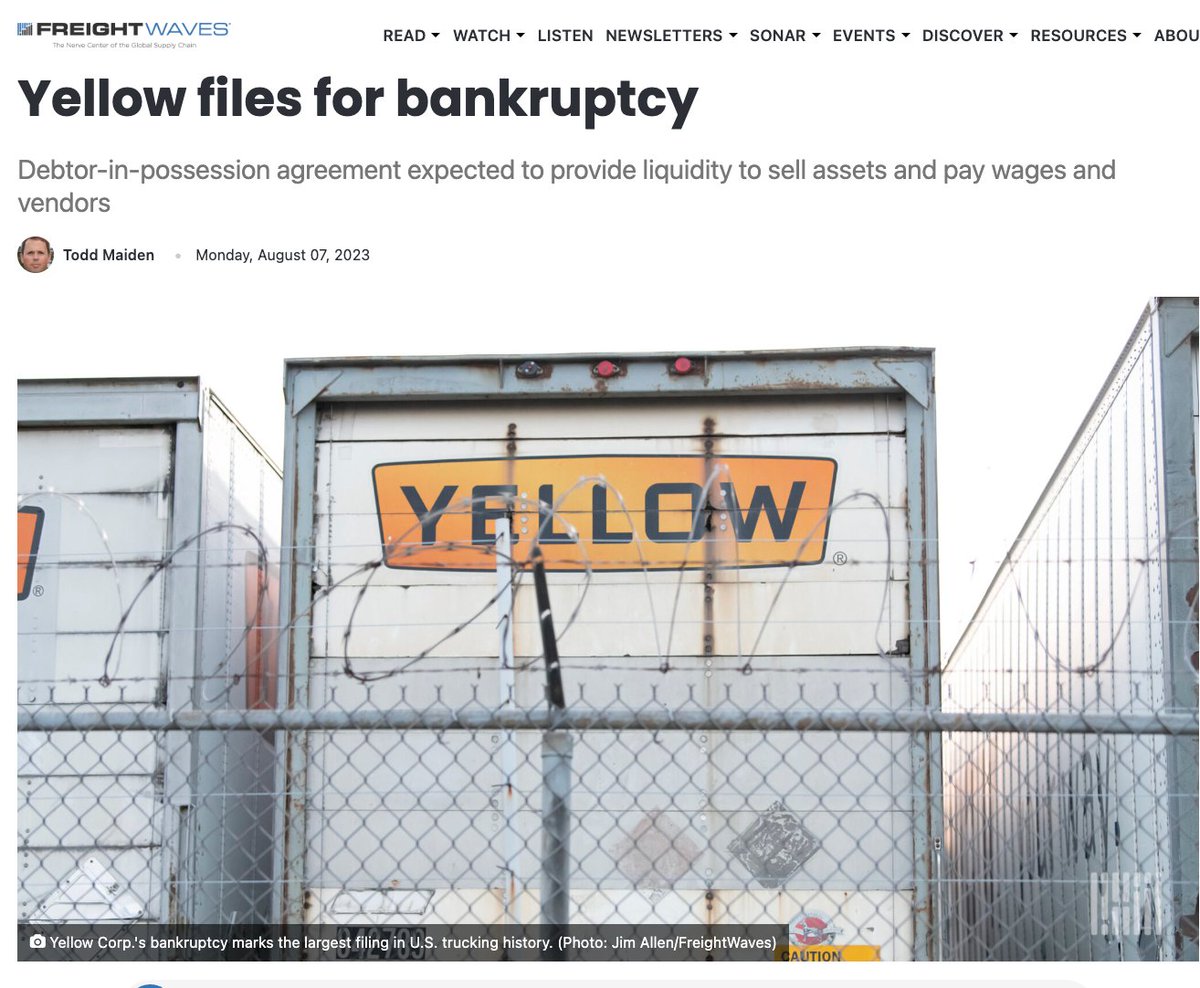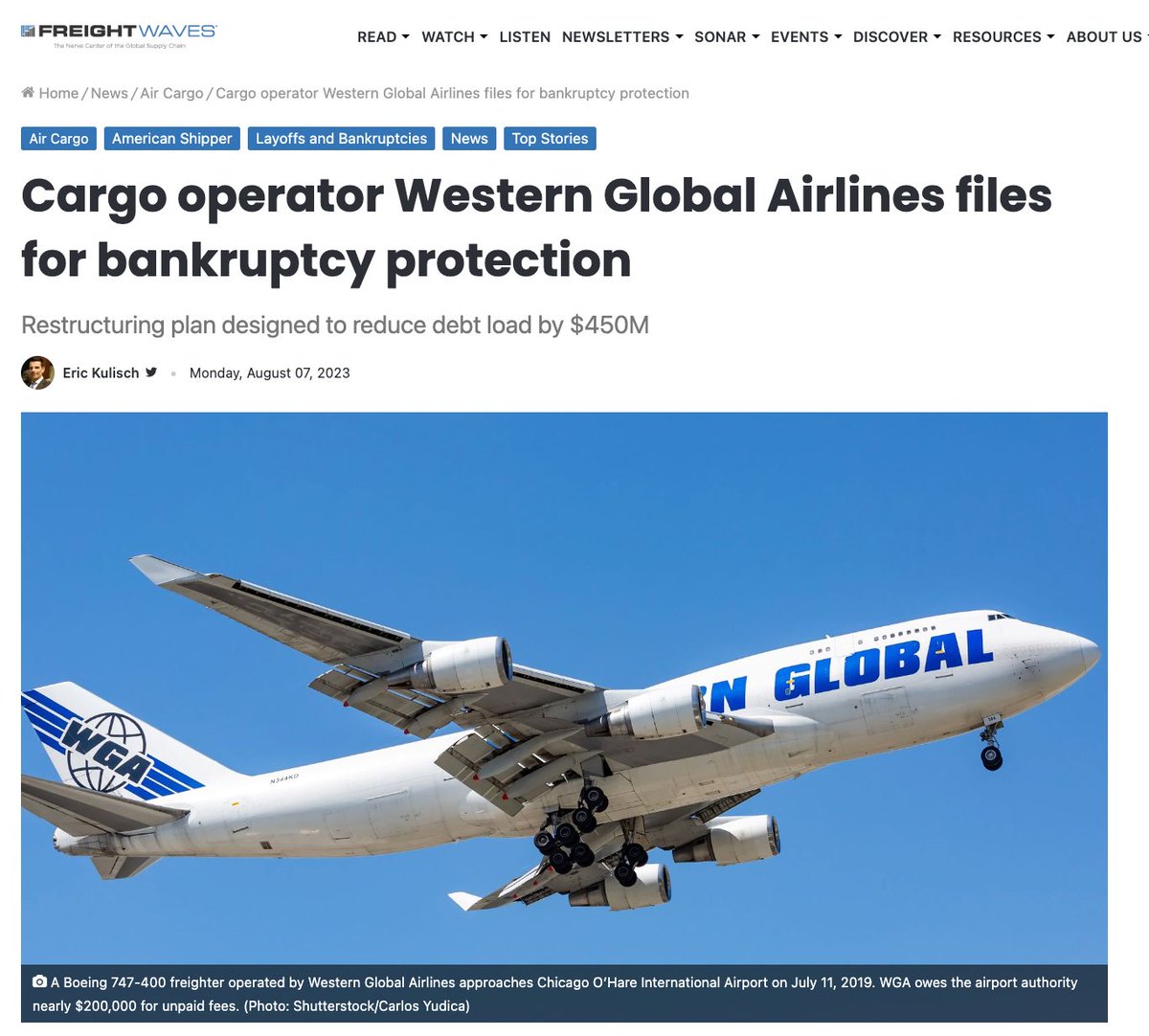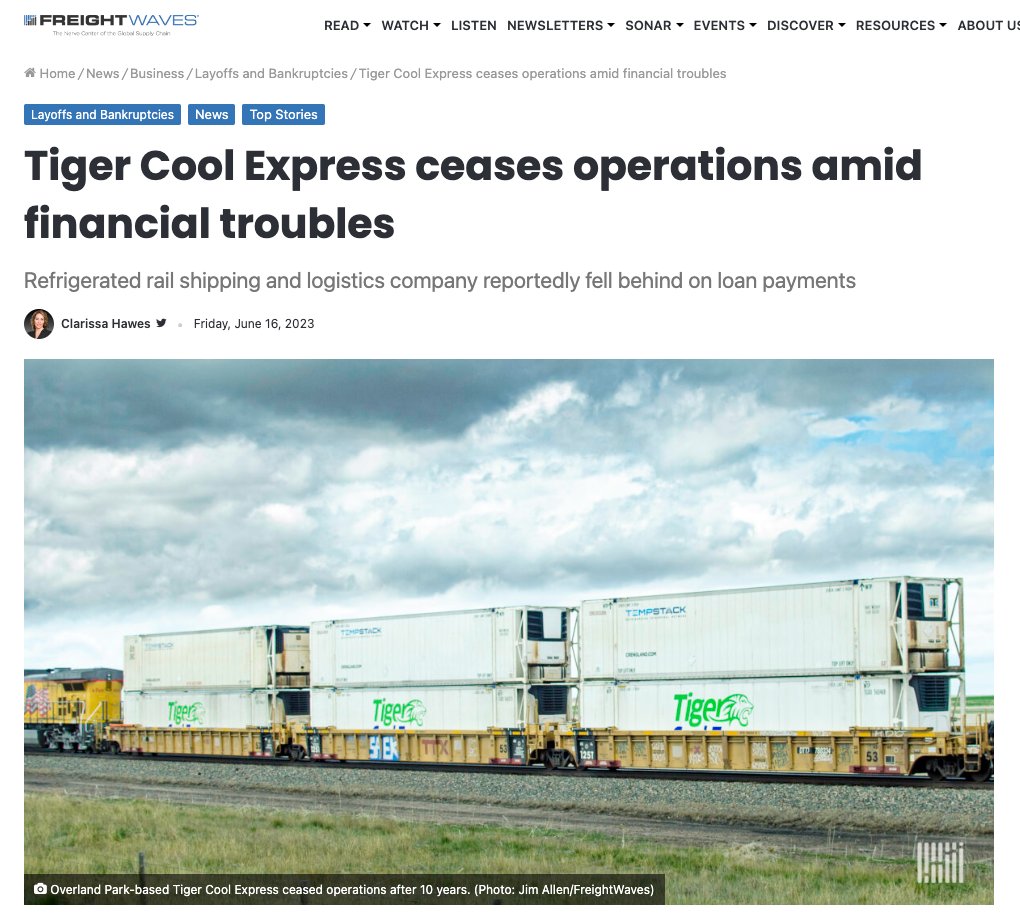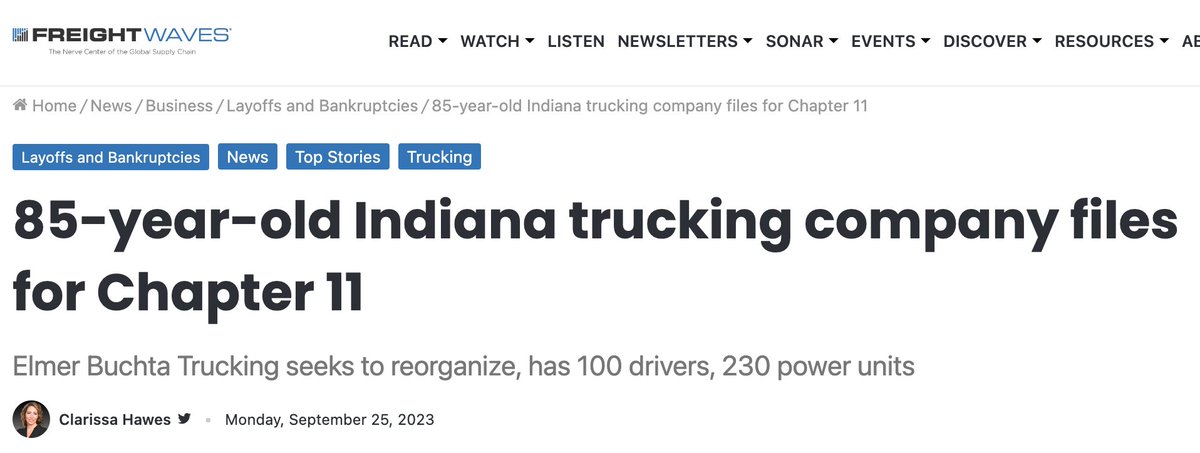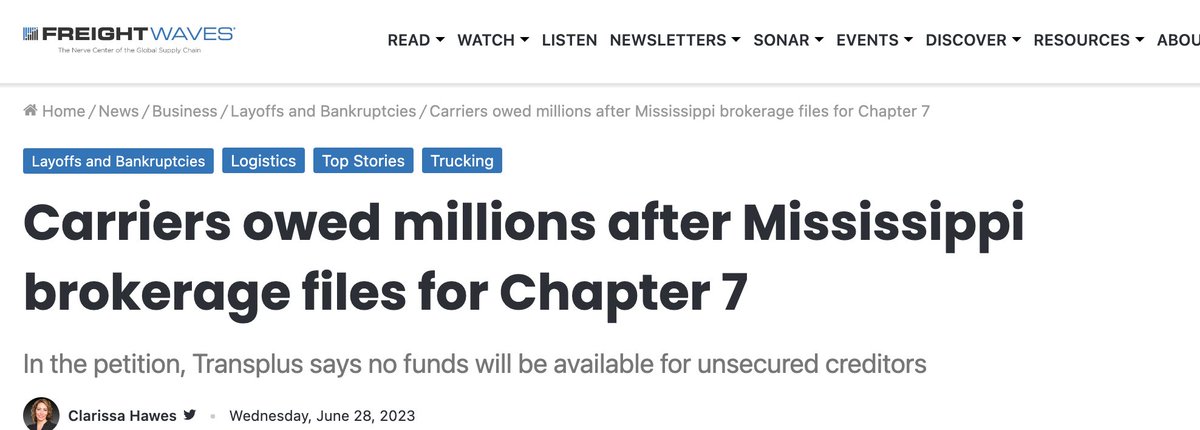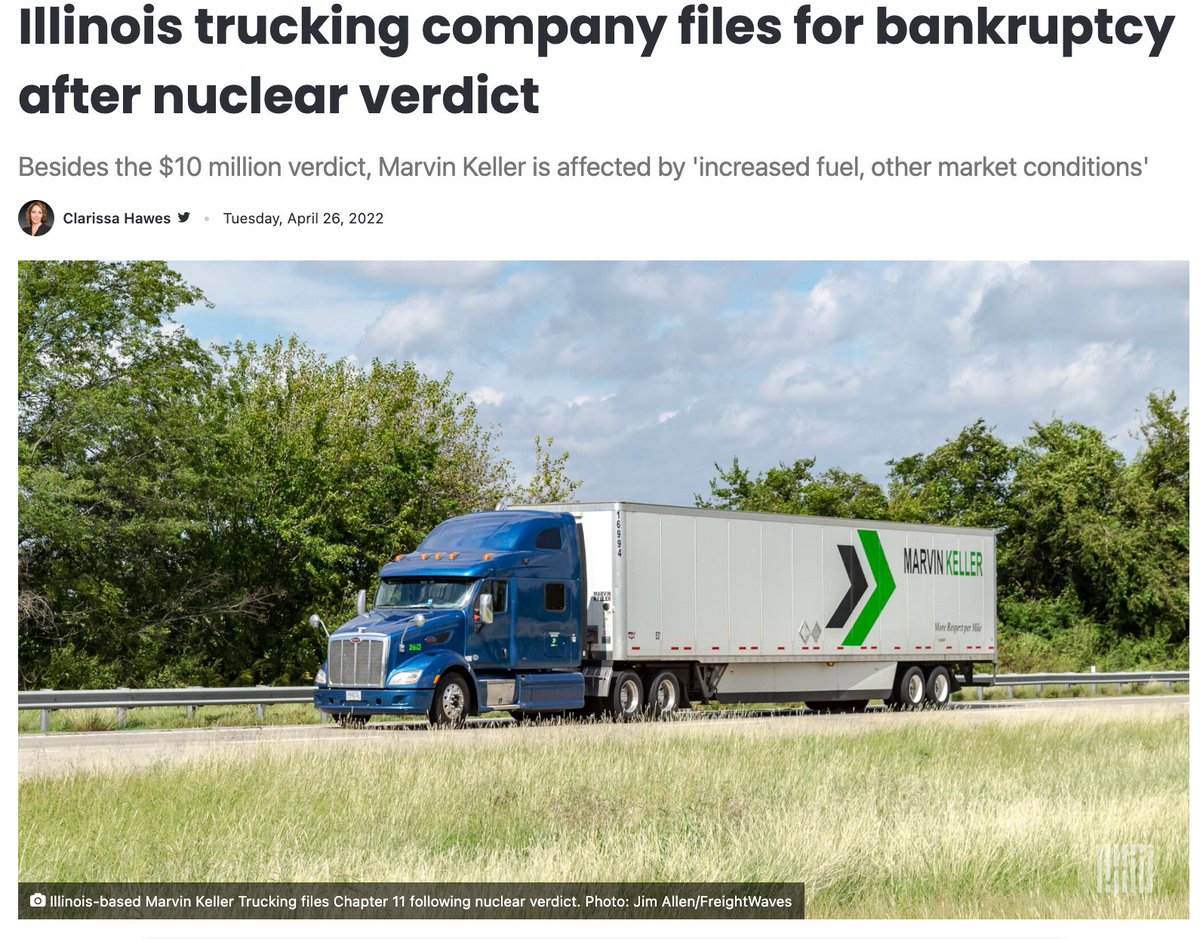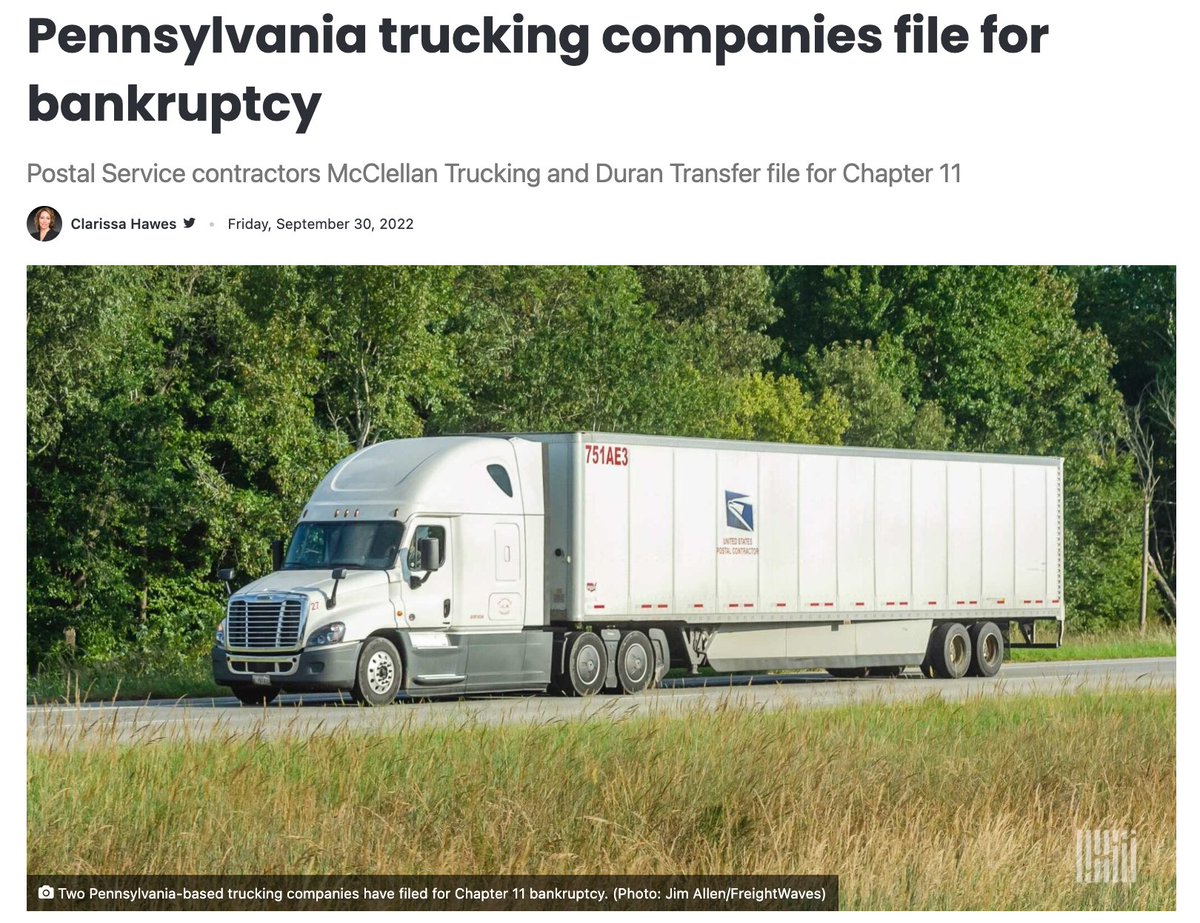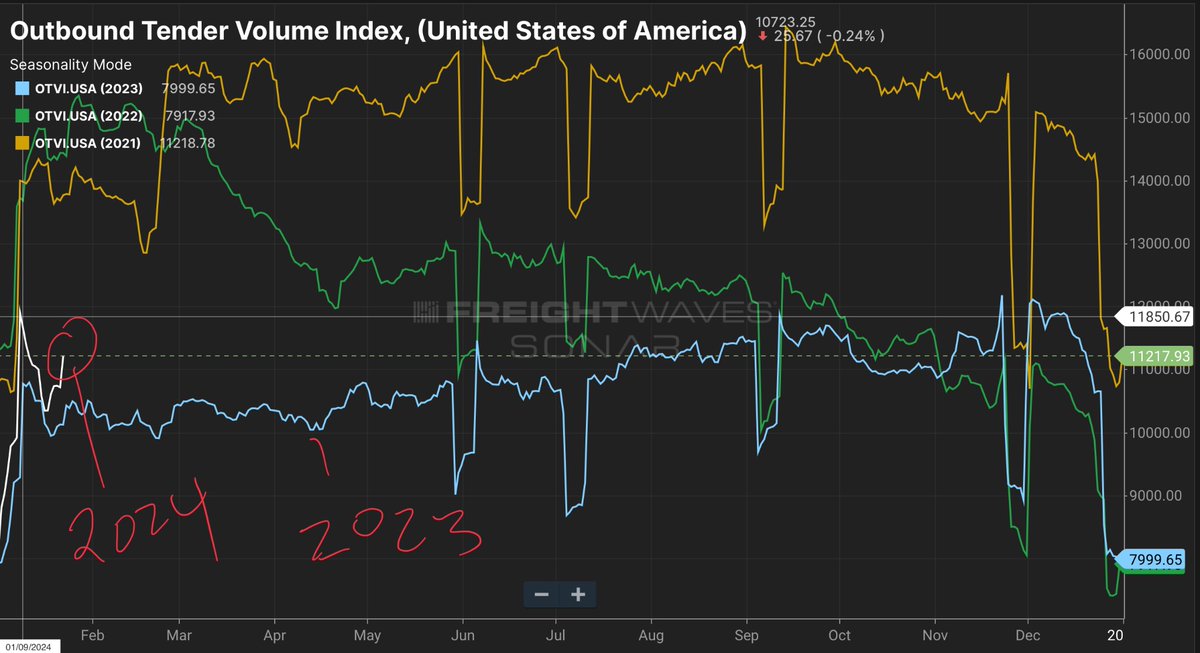The freight market is experiencing a severe recession and bloodbath.
Here is a round-up of the doom and gloom headlines that have occurred in one of the worst downturns in freight market history.
Full articles and ongoing coverage on FreightWaves.
1/🧵
Here is a round-up of the doom and gloom headlines that have occurred in one of the worst downturns in freight market history.
Full articles and ongoing coverage on FreightWaves.
1/🧵
After the founder embezzles $25M to purchase a G-550 and $5M mansion in Texas, Goldman-backed Slync winds down operations 5/ 

Freight broker with $200M in revenues files for bankruptcy as company experiences 30% drop in revenues 6/ 
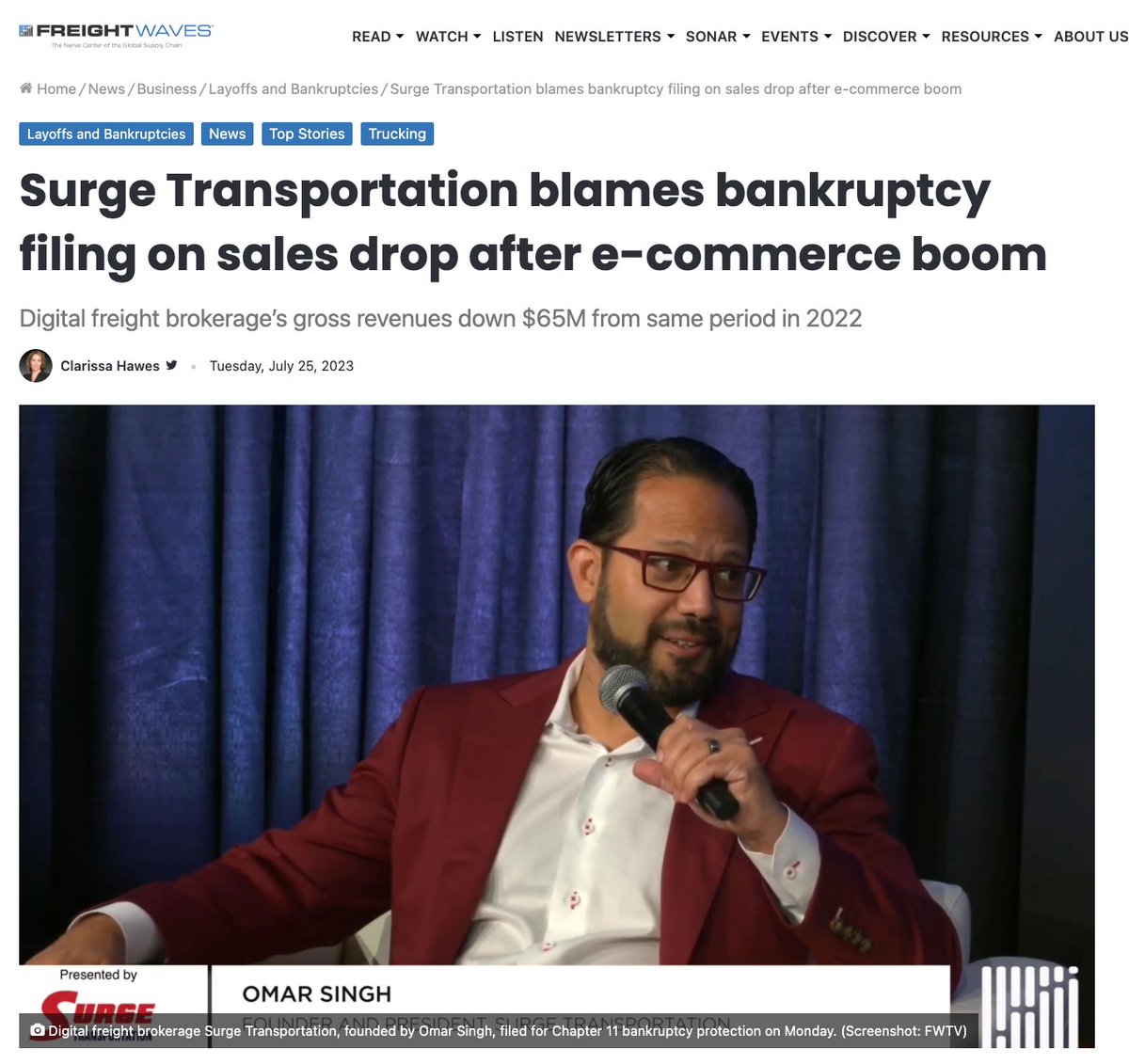
Elite Transport fails to pay carriers since May, leaving many to expect an imminent bankruptcy filing 14/ 

Ameritrans, a postal contractor, files for bankruptcy leaving millions in unpaid wages and contractor payments 17/ 

Iowa-based Citizens Bank failed due to over-exposure to its commercial trucking portfolio 28/
https://twitter.com/JG_Nuke/status/1720878104317493750?s=20
• • •
Missing some Tweet in this thread? You can try to
force a refresh

